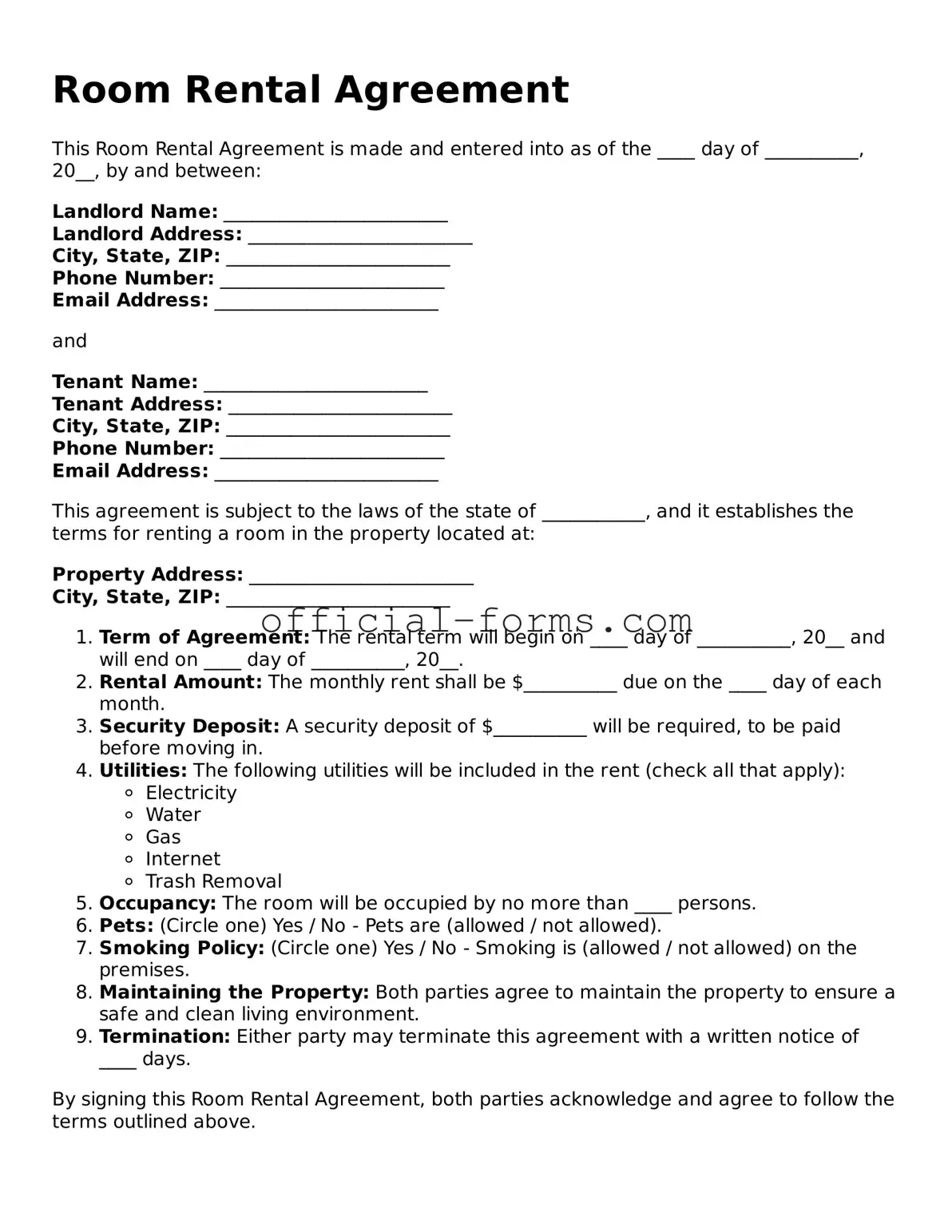Filling out a Room Rental Agreement can be straightforward, but many people make common mistakes that can lead to misunderstandings or disputes later on. One frequent error is failing to provide accurate personal information. When you enter your name, address, and contact details, ensure they are correct. Mistakes in this section can cause issues with communication or legal notices.
Another common mistake is neglecting to specify the rental term. Whether it’s a month-to-month arrangement or a fixed lease, clearly stating the duration is essential. This omission can lead to confusion about when the agreement starts and ends, potentially causing disputes over rent payments or eviction notices.
People often overlook the importance of detailing the rent amount and payment schedule. It’s crucial to clearly state how much rent is due, when it is due, and the acceptable payment methods. Without this clarity, misunderstandings about payment obligations can arise, leading to financial strain and conflict.
Additionally, many individuals forget to include the security deposit terms. Clearly outline the amount of the deposit, the conditions under which it may be withheld, and the timeline for its return. This helps protect both the landlord and tenant and sets clear expectations regarding the property’s condition.
Another mistake is failing to address maintenance responsibilities. Both parties should understand who is responsible for repairs and maintenance. If this section is vague or missing, it may lead to disputes about who should handle repairs, which can create tension between landlords and tenants.
Not reading the entire agreement before signing is a significant oversight. It’s essential to review all terms and conditions carefully. If something seems unclear or unfair, ask for clarification or negotiate changes. Signing without understanding the full scope of the agreement can lead to unforeseen complications.
Lastly, many people forget to keep a copy of the signed agreement. After signing, both parties should retain a copy for their records. This document serves as a reference point for the terms agreed upon and can be invaluable if disputes arise in the future. Keeping this record can help ensure that both parties adhere to the agreed-upon terms.
